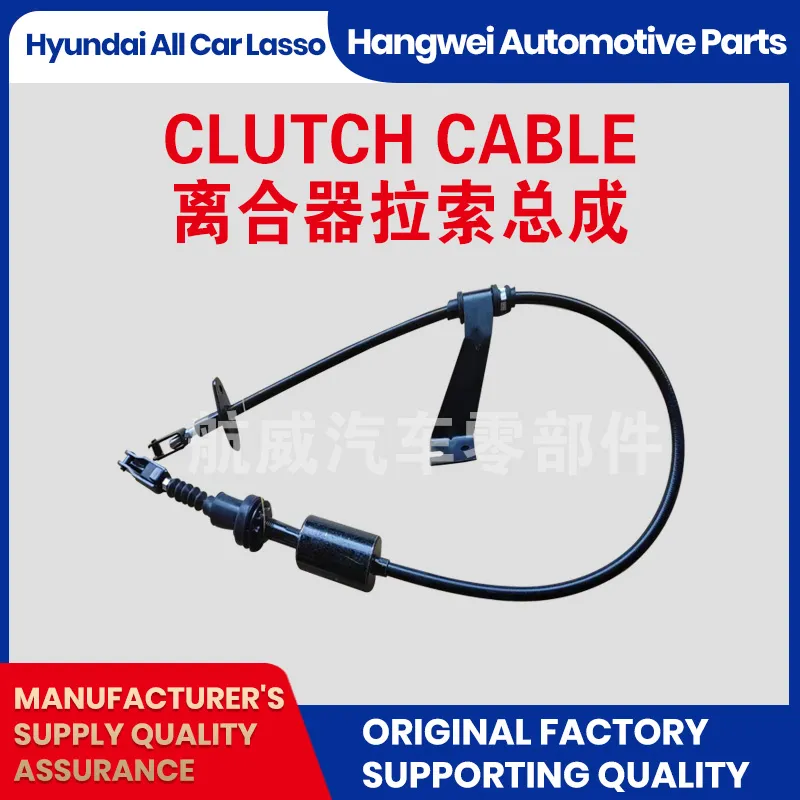Hydraulic Clutch System Installation and Maintenance Guide for Optimal Performance
Understanding Hydraulic Clutch Lines Importance and Functionality
Hydraulic systems play a pivotal role in modern automotive engineering, particularly in the operation of clutches. The hydraulic clutch line, an essential component of this system, serves to facilitate the successful engagement and disengagement of the clutch, enabling smooth transitions between gear shifts. Understanding the significance of the hydraulic clutch line is crucial for vehicle owners and automotive enthusiasts alike.
What is a Hydraulic Clutch Line?
A hydraulic clutch line is a component of the hydraulic system that connects the clutch master cylinder to the slave cylinder. When the driver presses the clutch pedal, hydraulic fluid is pushed from the master cylinder through the hydraulic lines to the slave cylinder, which then engages or disengages the clutch mechanism. This system replaces the traditional mechanical linkage found in older vehicles, offering several advantages such as reduced pedal effort, improved feedback, and increased reliability.
Components of the Hydraulic Clutch System
The hydraulic clutch system comprises several key components
1. Clutch Pedal This is the interface between the driver and the clutch system. When pressed, it actuates the hydraulic master cylinder.
2. Master Cylinder Located near the clutch pedal, this cylinder converts the mechanical force from the pedal into hydraulic pressure by pushing the hydraulic fluid into the line.
3. Hydraulic Fluid Lines These are the tubes or hoses that transport hydraulic fluid from the master cylinder to the slave cylinder. They must be durable and resistant to pressure to ensure efficient operation.
4. Slave Cylinder This component receives the hydraulic fluid from the master cylinder and uses it to engage or disengage the clutch. It typically has a piston that moves forward or backward based on the hydraulic pressure applied.
5. Hydraulic Fluid The fluid used in this system is specially formulated to withstand high pressure and temperature. Its properties ensure smooth operation and longevity of the system.
hydraulic clutch line

Advantages of Hydraulic Clutch Systems
One of the significant benefits of hydraulic clutch lines over their mechanical counterparts is the increased precision in clutch operation. With minimal lag between pedal movement and clutch engagement, drivers enjoy a more responsive driving experience. Additionally, hydraulic systems generally require less physical effort to operate, which is particularly beneficial in stop-and-go traffic.
Another advantage is reduced wear and tear on components. Hydraulic systems have fewer moving parts, leading to enhanced durability and less frequent maintenance compared to mechanical systems. Additionally, the hydraulic fluid can help to lubricate and cool the components, further extending their lifespan.
Maintenance Considerations
While hydraulic clutch systems are designed for longevity, regular maintenance is essential to ensure optimal performance. Here are some tips
- Check Hydraulic Fluid Levels Low fluid levels can lead to improper operation of the clutch. Regularly inspect the reservoir and top off as necessary with the recommended hydraulic fluid.
- Inspect for Leaks Look for signs of leaks in the hydraulic lines or around the master and slave cylinders. Leaks can lead to loss of hydraulic pressure and impaired clutch function.
- Bleed the Clutch System Air trapped in the hydraulic lines can prevent proper fluid flow and reduce clutch responsiveness. Periodically bleeding the system can help remove any air and maintain optimal performance.
- Monitor Pedal Feel Any changes in the clutch pedal’s resistance or feel can indicate issues with the hydraulic system. If the pedal becomes spongy or requires excessive force to engage, it may be time to inspect the system.
Conclusion
In summary, the hydraulic clutch line is a crucial element of the hydraulic clutch system, ensuring smooth and efficient vehicle operation. Understanding its components, benefits, and maintenance can help vehicle owners make informed decisions about their vehicles and enhance their driving experience. As automotive technology continues to evolve, the significance of hydraulic systems will undoubtedly grow, making knowledge about these systems invaluable for the modern driver.
-
Upgrade Your Vehicle with High-Quality Handbrake CablesNewsNov.01,2024
-
Optimize Your Bike's Performance with Quality CablesNewsNov.01,2024
-
Enhance Your Vehicle's Performance with Quality Clutch ComponentsNewsNov.01,2024
-
Elevate Your Vehicle's Performance with Quality Throttle CablesNewsNov.01,2024
-
Elevate Your Vehicle's Performance with Quality CablesNewsNov.01,2024
-
Affordable Solutions for Your Cable NeedsNewsNov.01,2024
